Dean Karau Kewanee history column: The 1935 Boss Manufacturing Company Strike, Part 1
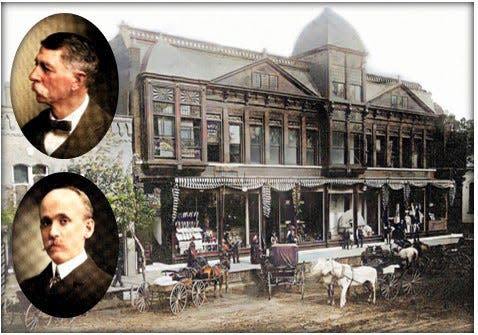
Hazen Hayes Perkins was born in 1847 in Ottawa, Illinois. By the early 1870s, he was inventing and making farm implements. He obtained his first patent for a cultivator in 1873.

More: Dean Karau history: The 1942 Great Kewanee Fire
By the mid-1870s, H. H. Perkins had arrived in Kewanee and continued making and selling farm implements.
In the early 1880s, Perkins invented an end gate for wagons, calling it the Boss shoveling board. (“Boss” was slang used to describe a top-of-the-line person, product, or concept.) His business partner, E. K. Hays, eventually purchased Perkins’ interest in the business and moved it to Galva.
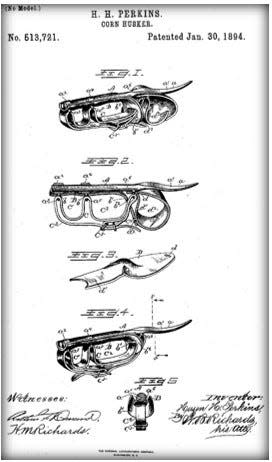
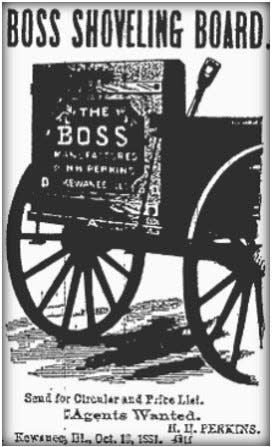
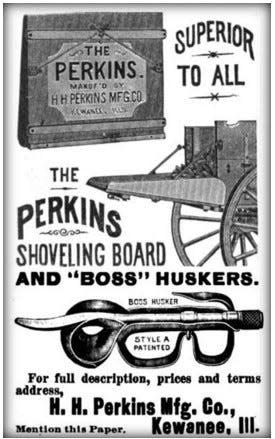
Perkins continued his prolific inventiveness, and in 1887, he obtained a patent for a metal pin for shucking corn, which he called the “Boss Husking Pin” or “Boss Husker.” Perkins organized the H. H. Perkins Co. to make and market his product.
By the early 1890s, Perkins had a number of patents on variations of the pin attached to gloves. In 1890, Perkins, Kewanee businessmen H. T. Lay, W. H. Lyman, and Henry Terry of the Lay & Lyman department store, and attorney C. C. Wilson, incorporated the H. H. Perkins Manufacturing Co. to exploit Perkins’ patents.
More: Dean Karau column: Vera Binks, Henry County's first woman lawyer
The company grew, and soon started manufacturing pumps, a new shoveling board, and a corn planter.
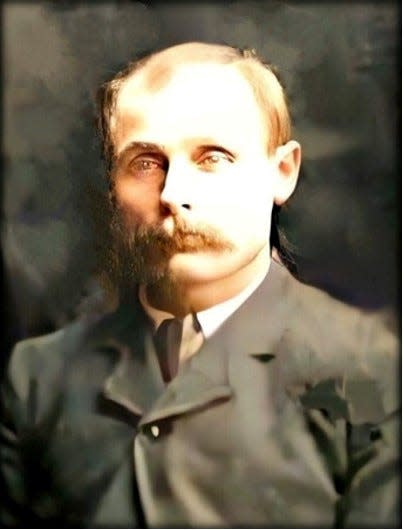
Perkins ended his association with the company in early 1893, and a more highly-capitalized company, the Boss Manufacturing Co., was incorporated, with Lyman, Lay, Terry, and Wilson as directors.
That same year, the company began manufacturing shirts, overalls, coats, and pants, its first foray into a sewing operation. The company also began construction of a new plant outside of the city limits, just north of the Chicago, Burlington, & Quincy tracks and to the west of the train depot. The main building was 28 ft. x 100 ft., three-stories tall; the woodshop was 28 ft. x 100 ft.; the powerhouse 48 ft. x 86 ft.; and the business office 80 ft. x 80 ft.
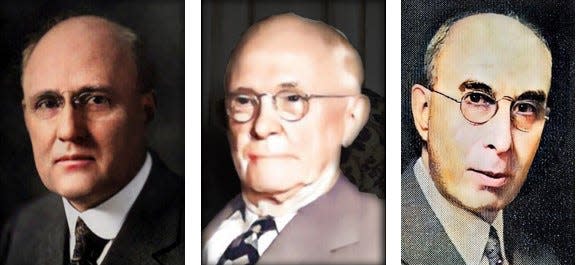
About this time, Lyman noticed that farmers’ wives were buying cotton flannel at the Lay & Lyman department store in order to make mittens to protect their husbands’ hands. Boss decided that, with the sewing equipment it already had, it could profitably make mittens for sale to farmers. Boss first made mittens, and then a five-fingered product, which became the work glove.
More: Dean Karau column: John H. Howe, Kewanee’s Civil War brigadier general
The mittens business took off, to the point that the clothing operation was discontinued and its equipment was devoted fulltime to making the popular mittens.
From the cotton duck husking mittens, Boss added a striped ticking model with a knit wrist. In 1902, it introduced jersey gloves, followed by a leather-faced palm glove. The first gloves were sold for five to six cents a pair at retail, and during husking season, a good retailer could sell 20,000 to 30,000 pairs.
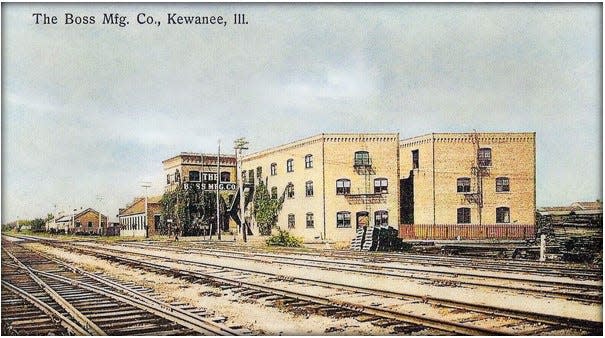
As the nation grew, Boss developed gloves for various industries – for brick and stone masons, painters, steel workers, railway workers among them - as well as for home uses such as gardening.
As it expanded its lines, Boss needed to expand production. In addition to adding to its Kewanee plant, in 1901 the company opened its first branch plant in Galesburg. It also started buying out smaller companies around the country, such as the Zero Mitten Company of Bluffton, Indiana, and the Frank M. Smaltz factory in Fort Wayne, Indiana. Boss opened its first Eastern branch in New York City in 1906, which complimented a Midwest office in Chicago. In the early 1900s, Boss was sometimes referred to as the “U.S. Steel” of the cotton work glove and mitten industry.
Meanwhile, Boss continued to expand its Kewanee operation. By the 1920s, the Boss empire was controlled by three men who became known as “The Big Three,” Frank M. Lay, Peter A. Waller, and Thomas R. Stokes. The former two led sales while the latter directed the manufacturing.
By the 1930s, Boss was employing 400 workers in Kewanee and many more across the U.S. It was selling its gloves around the world. Boss gloves even were used by Admiral Richard E. Byrd on one of his expeditions to the Antarctic in the 1930s.

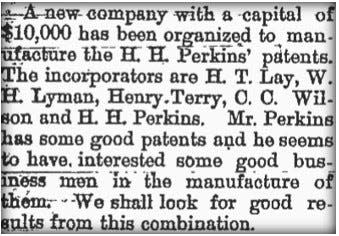
Despite the Depression, the early 1930s were an era of further growth for the company, and Boss became the leading glove producer in the nation.
But labor discord was afoot. Dorothy Mayhew Lay, an impressionable 15-year-old with ties to management in 1935, later wrote that
More: Dean Karau column: Kewaneean Arthur Watts lacked a past, but forged family's future
“[i]n the early 1930’s, the sewers and the leather and jersey cutters became increasingly disenchanted with the disastrous economic conditions of the depression years. They found life harsh in an economic atmosphere where there was never enough of life's necessities, where food was ground meat, not ground beef, seven days a week if you were fortunate enough to have meat at all, and where short work schedules of 2 hour days, or at most, 24-hour weeks, were the norm. The workers began to challenge a system plagued by favoritism which elicited glaring inequalities. The workers suspected their subsistence-economic welfare was being increasingly worsened by the unassailed policies of their Boss employers.”
The seeds of labor strife were sown, and soon Kewanee would face a strike that would have national implications.
To be continued.
(A special thanks to Nelson Mayhew Lay for kindly sharing his thesis, entitled LABOR VIOLENCE IN A SMALL TOWN: THE 1935 BOSS MANUFACTURING COMPANY STRIKE AT KEWANEE, ILLINOIS. Among other sources, I also relied on the article by Nelson’s mother, Dorothy Mayhew Lay, entitled STRIKE!, published in TALES FROM TWO RIVERS III.)
(You can see more of Dean Karau’s stories, photos, and videos about Kewanee on his Dusty Roads® Facebook page at https://www.facebook.com/dusty.roads.kewanee.)
This article originally appeared on Star Courier: In 1935, trouble was brewing at Kewanee's Boss Manufacturing plant

